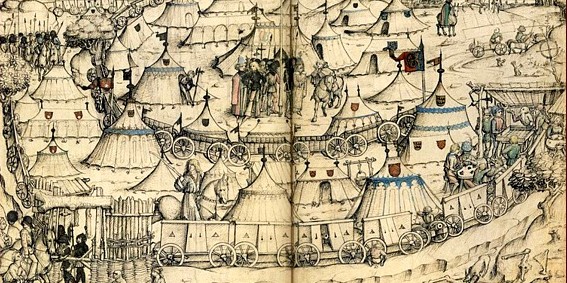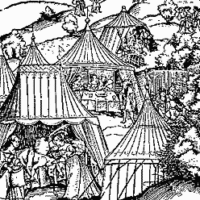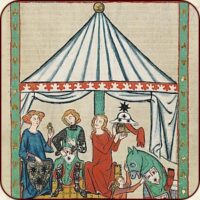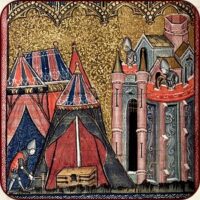The knight tents in the Middle Ages

In European history, the term Middle Ages refers to the epoch between the end of antiquity and the beginning of the modern era, around the 6th to 15th centuries. The Middle Ages are divided into three parts: early, high and late Middle Ages.
In the transition from late antiquity to the early Middle Ages, the political and cultural unity of the Mediterranean area, which was shaped by Greco-Roman antiquity, broke up. While the Byzantine Empire remained intact in the east, the western empire fell in 476. New empires emerged, inhabited by Roman, Germanic, Slavic and Celtic peoples. While the ancient core area was already influenced by Christianity, the remaining "pagan" areas of Europe were Christianized in the Middle Ages.
The high Middle Ages were the heyday of chivalry and the Roman-German Empire, feudalism and the song of Minnesota. The population began to grow, crafts and trade were promoted and education was no longer exclusively a privilege of the clergy. However, the development in the individual kingdoms was quite different. The Crusades fall into this epoch. Later the religious goals of the crusades took a back seat, often in favor of power politics and economic interests.
The late Middle Ages were the times of the rising bourgeoisie of the cities and the money economy. The worst catastrophe of the 14th century was the plague, which killed almost half of Europe's population, especially in the cities. The depopulation led to uprisings and a change in social structures, which weakened chivalry in favor of the bourgeoisie and sparked some reform movements in the Catholic Church. The arts and sciences were also on the move in the late Middle Ages. The founding of the first universities in the High Middle Ages and the invention of the printing press gave science and philosophy a new upswing. New possibilities opened up for artists, painting, which was previously limited to church motifs, was now expanded to other areas, and three-dimensionality was also discovered by the painters.
The transition from the Middle Ages to the modern era was largely due to the invention of modern letterpress printing around 1450, the discovery of the new world by Christopher Columbus in 1492 and the loss of the influence of the institutionalized Catholic Church with the beginning of the Reformation.
Source: wikipedia.org
Source: kayserstuhl.de



